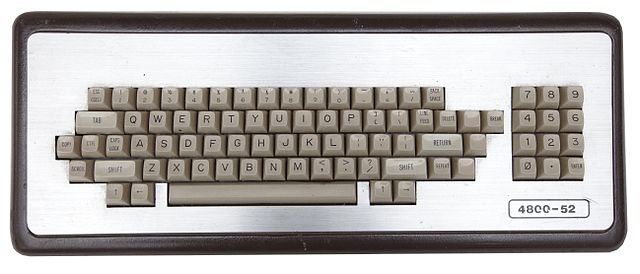QWERTY is a keyboard layout for Latin-script alphabets. The name comes from the order of the first six keys on the top letter row of the keyboard: QWERTY. The QWERTY design is based on a layout included in the Sholes and Glidden typewriter sold via E. Remington and Sons from 1874. QWERTY became popular with the success of the Remington No. 2 of 1878 and remains in ubiquitous use.
Remington 2 typewriter keyboard, 1878
A laptop computer keyboard using the QWERTY layout
Keys are arranged on diagonal columns to give space for the levers.
Remington 2 typewriter, 1878 - First typewriter with a shift key for upper and lower case characters
A keyboard layout is any specific physical, visual, or functional arrangement of the keys, legends, or key-meaning associations (respectively) of a computer keyboard, mobile phone, or other computer-controlled typographic keyboard.
MIT "space-cadet" keyboard, a pre-ISO/IEC 9995 keyboard with a large number of modifier keys. It was equipped with four keys for bucky bits (Control, Meta, Hyper, and Super); and three shift keys, called "shift", "top", and "front".
4800-52 mainframe / dumb terminal keyboard, c. mid-1980s. There is an obscure configuration of modifier and arrow keys, line feed key, break key, blank keys, and repeat key.
Keyboard of a Letter-Printing Telegraph Set built by Siemens and Halske in Russia c. 1900
A visual layout consisting of both factory-printed symbols and customized stickers








